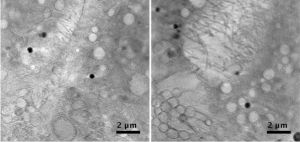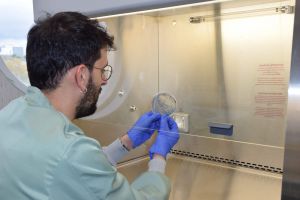
Investigadores del CNB-CSIC y la USC determinan el tamaño en el que la complejidad social de los grupos humanos implica un salto cualitativo
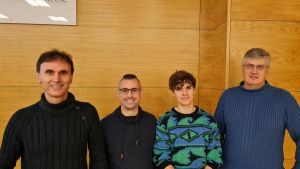
- Su investigación concluye que el comportamento colectivo humano se ve alterado de forma notoria al llegar a grupos de 180 e 5.000 personas
Las dinámicas sociales son moldeadas tanto por las acciones individuales como por las tendencias colectivas que emergen cuando las personas se juntan. Con todo, el comportamiento de los sistemas sociales cambia cuando su tamaño cruza ciertos umbrales, lo que implica que los comportamientos emergentes comiencen a dar forma al destino del conjunto, anulando la dinámica más directa de cada una de las partes. Este es el punto de partida del trabajo desarrollado por investigadores de la USC y del Centro Nacional de Biotecnología del CSIC en el artículo titulado ‘A spectrum of complexity uncovers Dunbar’s number and other leaps in social structure’. A través de un novedoso análisis matemático, la investigación publicada en Chaos, Solitons & Fractals determina escalas (números de personas) en las que la complejidad de un grupo social se ve incrementada de manera especialmente intensa. Los resultados son de potencial aplicación en economía o política, por ejemplo, a la hora de comprender como cambiará la complejidad de una empresa o una región al crecer por encima de un cierto tamaño.
Identifican una nueva estrategia para combatir la resistencia bacteriana a los antibióticos
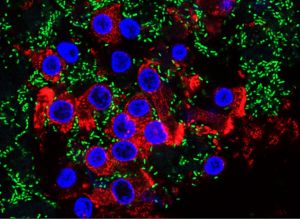
- Investigadores del CSIC mejoran la respuesta terapéutica de antibióticos ya existentes al inducir, por primera vez de forma temporal, un tipo de sensibilidad colateral
- La sensibilidad colateral transitoria, es decir, la inducción temporal del proceso por el que la resistencia a un antibiótico genera mayor sensibilidad a otro, podría utilizarse en forma de nuevas terapias
La resistencia de las bacterias a los antibióticos es una de las principales amenazas globales de salud pública. Según la Organización Mundial de la Salud (OMS), esta pandemia silenciosa causa aproximadamente 700.000 muertes al año y, si no se revierte la tendencia, podría convertirse en 2050 en la primera causa de mortalidad con 10 millones de muertes anuales. Ahora, investigadores del Centro Nacional de Biotecnología (CNB) del CSIC publican en la revista Nature Communications un estudio que muestra cómo la sensibilidad colateral puede inducirse de forma temporal, algo no descrito hasta la fecha, para evitar la aparición de cepas bacterianas resistentes a los antibióticos y para mejorar la respuesta terapéutica de fármacos antibacterianos ya existentes.
Se trata de la “sensibilidad colateral transitoria”, llamada así por los investigadores del CNB-CSIC firmantes del estudio Sara Hernando-Amado, Pablo Laborda y José Luis Martínez. Si la sensibilidad colateral es la compensación evolutiva por la que la adquisición de una mutación de resistencia a un antibiótico por parte de una bacteria conlleva mayor sensibilidad a otro, el tipo de sensibilidad colateral descrita por los investigadores destaca por ser inducible de forma temporal, por evitar la aparición de mutaciones de resistencia a los antibióticos en las bacterias tratadas y por proporcionar una mejora terapéutica en el uso de antibióticos ya comercializados.
El CNB-CSIC lidera uno de los cinco proyectos de I+D en biomedicina de la Comunidad de Madrid
El CNB inaugura las visitas a centros del CSIC dentro del programa CICERON
CNBerAs: una nueva serie de cómics sobre el trabajo realizado por investigadoras del CNB
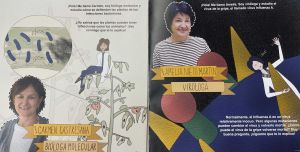
-
- Para conmemorar el 8 de marzo, Día Internacional de la Mujer, comenzamos en 2023 una serie de cómics sobre el trabajo y la trayectoria de científicas del CNB.
- Las investigaciones de Amelia Nieto y Carmen Castresana, primeras elegidas en la colección.
-
¡¡¡Descubre abajo las nuevas incorporaciones en el 8M de 2024!!!
Marie Curie, Rosalynd Franklin, Margarita Salas… científicas posiblemente conocidas por gran parte de la sociedad, pero, ¿sabemos si alguna de nuestras vecinas es científica? Isabel Sola o Sonia Zuñiga son ejemplos de investigadoras que pasaron a ser reconocibles en sus barrios (y fuera de ellos) debido a la pandemia de COVID-19.
Más del 50% del personal del CNB son mujeres, sin embargo, sólo 18 de los 75 grupos de investigación del CNB, lo que corresponde a un 24%, están dirigidos o co-dirigidos por mujeres. Desde la Comisión de Igualdad del CNB-CSIC y con el objetivo de visibilizar el trabajo de investigadoras del CNB, nace la colección “CNBerAs”, una serie de cómics que desgranarán de manera sencilla los logros de científicas que han desarrollado gran parte de su trayectoria en el centro. Los dos cómics que abren la colección han sido diseñados y elaborados por Alicia Calvo-Villamañán, científica e ilustradora y también miembro de la comisión de Igualdad del CNB. Para el 8 de Marzo de 2024 se enriquece nuestra colección de CNBeras con la adición de nuevas científicas e ilustradoras y por tanto, la incorporación de nuevos estilos artísticos. Los cómics se encuentran disponibles para descarga en la web del CNB y se han realizado 100 copias para su distribución.
Lluís Montoliu se incorpora al Consejo Científico de la Fundación Lilly

La Fundación Lilly incorpora a Lluís Montoliu, investigador del CNB-CSIC, a su Consejo Científico, y destaca, entre otros aspectos, su gran experiencia colaborando con asociaciones de pacientes. Esta faceta aportará puntos de vista complementarios, tanto científicos como humanistas, a los temas que se debaten habitualmente en el consejo asesor de la Fundación. Con la incorporación de Montoliu son 14 las personalidades que forman parte del Consejo Científico presidido por Mariano Barbacid.
Entre los objetivos de la Fundación Lilly destaca el fomento de la ciencia, el impulso la medicina y la promoción de los valores del humanismo científico.
Descubierta una de las causas de la agresividad del cáncer de hígado: una ‘grapa molecular’ que ayuda a reparar el DNA roto
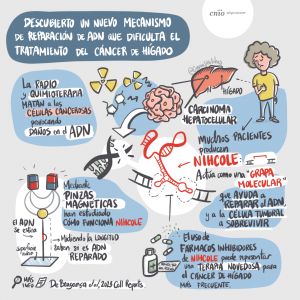
Los investigadores describen un nuevo mecanismo de reparación de DNA que dificulta el tratamiento del cáncer
- ·Han empleado ‘pinzas magnéticas’, una novedosa técnica nanotecnológica que mide cuánto se estira una única molécula de DNA. El trabajo se publica en Cell Reports.
- ·“Comprender este mecanismo podría ayudar a diseñar estrategias terapéuticas contra el cáncer de hígado más habitual”, dice Óscar Llorca, del CNIO.
Para las células son muy importantes los mecanismos de corrección de errores, porque en la rica actividad celular constantemente hay fallos de funcionamiento. Pero cuando se trata de matar células cancerosas lo que interesa es precisamente provocar errores. La radio- y la quimioterapia los provocan rompiendo el DNA de las células. Sin embargo, hay células tumorales que tienen una maquinaria de reparación del DNA excepcionalmente eficaz, y esto les permite escapar al tratamiento contra el cáncer.
Óscar Llorca, del CNIO; Fernando Moreno-Herrero, del CNB; y Puri Fortes, del CIMA-Universidad de Navarra, desvelan ahora en un trabajo en Cell Reports cómo funciona uno de estos sistemas excepcionales de reparación: una grapa molecular que una novedosa técnica nanotecnológica muestra por primera vez en acción.
Investigadores del CSIC descubren cómo los recubrimientos de las nanopartículas afectan a su biodistribución y degradación
IBiS and CNB researchers show that a CSIC vaccine against COVID-19 protects against infection and brain damage caused by the virus
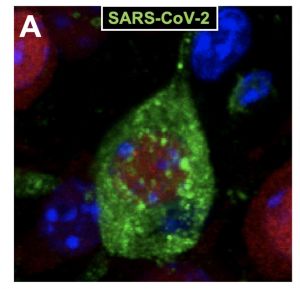
- The study, published in the prestigious journal Nature Neuroscience, was conducted by Spanish researchers from the Institute of Biomedicine of Seville (IBiS, Virgen del Rocío University Hospital/CSIC/University of Seville) and the National Center for Biotechnology (CNB-CSIC).
- They show that SARS-CoV-2 infects and damages neurons in different regions of the brain of a coronavirus-susceptible mouse and these effects are completely prevented by the Spanish vaccine against COVID-19 developed at the CNB-CSIC.
Seville, January 9th 2023
Although the pathology of the respiratory system is the main impact of the COVID-19 disease, caused by the SARS-CoV-2 coronavirus, many of the patients manifest important neurological symptoms, such as loss of smell (anosmia), headaches, malaise, cognitive loss, epilepsy, ataxia and encephalopathy, among others. However, this effect on the nervous system by the coronavirus has not been characterized in detail and it is unknown if the vaccines developed against COVID-19 prevent the spread of SARS-CoV-2 to the central nervous system and confer protection against brain injury.
Now, using a mouse model susceptible to the SARS-CoV-2 coronavirus infection, a multidisciplinary team of Spanish researchers led by Dr. Javier Villadiego and Dr. Juan José Toledo-Aral (IBiS, CIBERNED and Department of Medical Physiology and Biophysics of the Faculty of Medicine of Seville) and Juan García-Arriaza (Department of Molecular and Cellular Biology of the CNB-CSIC, CIBERINFEC and PTI Global Health of CSIC), in collaboration with other groups from the University of Seville and the Spanish National Research Council (CSIC), demonstrate the ability of SARS-CoV-2 to infect different regions of the brain and to cause brain damage, and how the CNB-CSIC vaccine fully protects against infection of the brain. These findings are published in the prestigious journal Nature Neuroscience.
Researchers have studied the evolution of viral infection in different brain regions, noting that viral replication occurs mainly in neurons, producing neuropathological alterations such as neuronal loss, glial activation and vascular damage. “We have carried out a very detailed anatomo-pathological and molecular study of the brain regions and the types of cells that have been infected by the virus. It is remarkable how the virus infects different areas and mainly neurons”, explains Javier Villadiego.
Once the pattern of infection in the brain by SARS-CoV-2 was established, the researchers evaluated the efficacy of the vaccine against COVID-19 developed at the CNB-CSIC. To do this, they immunized mice with one or two doses of the MVA-CoV2-S vaccine, based on the modified vaccinia virus Ankara (MVA) expressing the spike (S) protein of SARS-CoV-2, and analyzed the capability to protect against infection and damage to the brain. “The results obtained were spectacular, demonstrating that even the administration of a single dose of the MVA-CoV2-S vaccine completely prevents SARS-CoV-2 infection in all brain regions studied and it prevents associated brain damage, even after a reinfection with the virus. This demonstrates the great efficacy and immunogenic power of the vaccine that induces sterilizing immunity in the brain”, as Juan García-Arriaza indicates.
These results reinforce previous data on the immunogenicity and efficacy of the MVA-CoV2-S vaccine in various animal models. “We had previously shown in a series of publications that the MVA-CoV2-S vaccine that we developed at the CNB-CSIC induces in three animal models (mouse, hamster and macaque) a potent immune response of antibodies binding to the S protein of the virus and of neutralizing antibodies against different variants of concern of the virus, as well as T lymphocytes activation, essential markers for infection control”, says Mariano Esteban, CNB-CSIC researcher involved in the study.
The results have important long-term implications for understanding the infection caused by SARS-CoV-2. “The data we have obtained on SARS-CoV-2 infection in the brain are compatible with the neurological pathology observed in patients with COVID-19”, highlights José López-Barneo, IBiS researcher who participated in the publication. “Our work is the first study of a vaccine that is 100% effective against brain damage caused by SARS-CoV-2 in a susceptible mouse, and the results obtained strongly suggest that the vaccine could prevent persistent COVID-19 observed in several people infected with SARS-CoV-2”, highlights Juan José Toledo-Aral.
“The data provided in this study with complete inhibition of SARS-CoV-2 replication in the brain mediated by the MVA-CoV2-S vaccine, together with previous studies published by the group and collaborators on the immunogenicity and efficacy of the vaccine against different variants of SARS-CoV-2, support phase I clinical trials with such a vaccine, or similar prototypes, to assess their safety and immunogenicity”, the authors of the study emphasize.
Scientific reference:
Javier Villadiego, Juan García-Arriaza, Reposo Ramírez-Lorca, Roberto García-Swinburn, Daniel Cabello-Rivera, Alicia E. Rosales-Nieves, María I. Álvarez-Vergara, Fernando Cala-Fernández, Ernesto García-Roldán, Juan L. López-Ogáyar, Carmen Zamora, David Astorgano, Guillermo Albericio, Patricia Pérez, Ana M. Muñoz-Cabello, Alberto Pascual, Mariano Esteban, José López-Barneo & Juan José Toledo-Aral.
Full protection from SARS-CoV-2 brain infection and damage in susceptible transgenic mice conferred by MVA-CoV2-S vaccine candidate.
Nature Neuroscience (2023). DOI: 10.1038/s41593-022-01242-y
Resucitan ancestros de la herramienta de edición genética CRISPR de hace 2600 millones de años
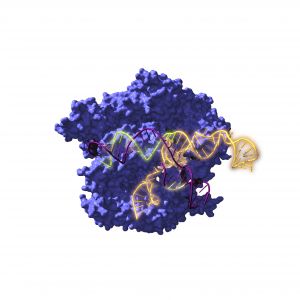
- Un estudio internacional liderado por científicos españoles descifra el origen de la herramienta de edición genética CRISPR y constata su actividad original
- El trabajo, publicado en la prestigiosa revista científica Nature Microbiology, abre nuevas vías en la manipulación de ADN y en el tratamiento de enfermedades como el cáncer o la diabetes
Un grupo de investigación internacional ha reconstruido por primera vez ancestros del conocido sistema CRISPR-Cas de hace 2.600 millones de años y ha estudiado su evolución a lo largo del tiempo. Los resultados apuntan a que los sistemas revitalizados no solo funcionan, sino que son más versátiles que las versiones actuales y podrían tener aplicaciones revolucionarias. La prestigiosa revista científica Nature Microbiology ha dado a conocer los resultados de esta investigación que, en opinión del equipo investigador “abre nuevas vías para la edición genética”.
En el proyecto, dirigido por el investigador Ikerbasque de CIC nanoGUNE Rául Pérez-Jiménez, participan equipos del Consejo Superior de Investigaciones Científicas como el de Lluís Montoliu en el Centro Nacional de Biotecnología, la Universidad de Alicante, el Centro de Investigación Biomédica en Red de Enfermedades Raras (CIBERER), el Hospital Ramón y Cajal-IRYCIS y otras instituciones estatales e internacionales.
COOKIES POLICY
A cookie is a text file that is stored on your computer or mobile device via a web server and only that server will be able to retrieve or read the contents of the cookie and allow the Web site remember browser preferences and navigate efficiently. Cookies make the interaction between the user and the website faster and easier.
General information
This Website uses cookies. Cookies are small text files generated by the web pages you visit, which contain the session data that can be useful later in the website. In this way this Web remembers information about your visit, which can facilitate your next visit and make the website more useful.
How do cookies?
Cookies can only store text, usually always anonymous and encrypted. No personal information is ever stored in a cookie, or can be associated with identified or identifiable person.
The data allow this website to keep your information between the pages, and also to discuss how to interact with the website. Cookies are safe because they can only store information that is put there by the browser, which is information the user entered in the browser or included in the page request. You can not run the code and can not be used to access your computer. If a website encrypts cookie data, only the website can read the information.
What types of cookies used?
The cookies used by this website can be distinguished by the following criteria:
1. Types of cookies as the entity that manages:
Depending on who the entity operating the computer or domain where cookies are sent and treat the data obtained, we can distinguish:
- Own cookies: are those that are sent to the user's terminal equipment from a computer or domain managed by the editor itself and from which provides the service requested by the user.
- Third party cookies: these are those that are sent to the user's terminal equipment from a machine or domain that is not managed by the publisher, but by another entity data is obtained through cookies.
In the event that the cookies are installed from a computer or domain managed by the editor itself but the information collected by these is managed by a third party can not be considered as party cookies.
2. Types of cookies as the length of time that remain active:
Depending on the length of time that remain active in the terminal equipment can be distinguished:
- Session cookies: cookies are a type designed to collect and store data while the user accesses a web page. Are usually used to store information that only worth preserving for the service requested by the user at any one time (eg a list of products purchased).
- Persistent cookies: cookies are a type of data which are stored in the terminal and can be accessed and treated for a period defined by the head of the cookie, and can range from a few minutes to several years.
3. Cookies types according to their purpose:
Depending on the purpose for which the data are processed through cookies, we can distinguish between:
- Technical cookies: these are those that allow the user to navigate through a web page or application platform and the use of different options or services it exist as, for example, control traffic and data communication, identify the session, access to restricted access parts, remember the elements of an order, make the buying process an order, make an application for registration or participation in an event, use security features while browsing store content for dissemination videos or sound or share content via social networks.
- Customization cookies: these are those that allow the user to access the service with some general characteristics based on a predefined set of criteria in the user terminal would eg language, the type of browser through which you access the service, the locale from which you access the service, etc.
- Analysis cookies: they are those that allow the responsible for them, monitoring and analyzing the behavior of users of the web sites that are linked. The information gathered through such cookies are used in measuring the activity of web sites, application or platform and for the profiling of user navigation of such sites, applications and platforms, in order to make improvements function data analysis how users use the service.
Management tool cookies
This Website uses Google Analytics.
Google Analytics is a free tool from Google that primarily allows website owners know how users interact with your website. Also, enable cookies in the domain of the site in which you are and uses a set of cookies called "__utma" and "__utmz" to collect information anonymously and reporting of website trends without identifying individual users..
For statistics of use of this website use cookies in order to know the level of recurrence of our visitors and more interesting content. This way we can concentrate our efforts on improving the most visited areas and make the user more easily find what they are looking for. On this site you can use the information from your visit for statistical evaluations and calculations anonymous data and to ensure the continuity of service or to make improvements to their websites. For more details, see the link below privacy policy [http://www.google.com/intl/en/policies/privacy/]
How to manage cookies on your computer: disabling and deleting cookies
All Internet browsers allow you to limit the behavior of a cookie or disable cookies within settings or browser settings. The steps for doing so are different for each browser, you can find instructions in the help menu of your browser.
If you decline the use of cookies, since it is possible thanks to the preferences menu of your browser or settings, reject, this website will continue to function properly without the use of the same.
Can you allow, block or delete cookies installed on your computer by setting your browser options installed on your computer:
- For more information about Internet Explorer click here.
- For more information on Chrome click here.
- For more information about Safari click here.
- For more information about Firefox click here.
Through your browser, you can also view the cookies that are on your computer, and delete them as you see fit. Cookies are text files, you can open and read the contents. The data within them is almost always encrypted with a numeric key corresponding to an Internet session so often has no meaning beyond the website who wrote it.
Informed consent
The use of this website on the other hand, implies that you paid your specific consent to the use of cookies, on the terms and conditions provided in this Cookies Policy, without prejudice to the measures of deactivation and removal of cookies that you can take, and mentioned in the previous section.

